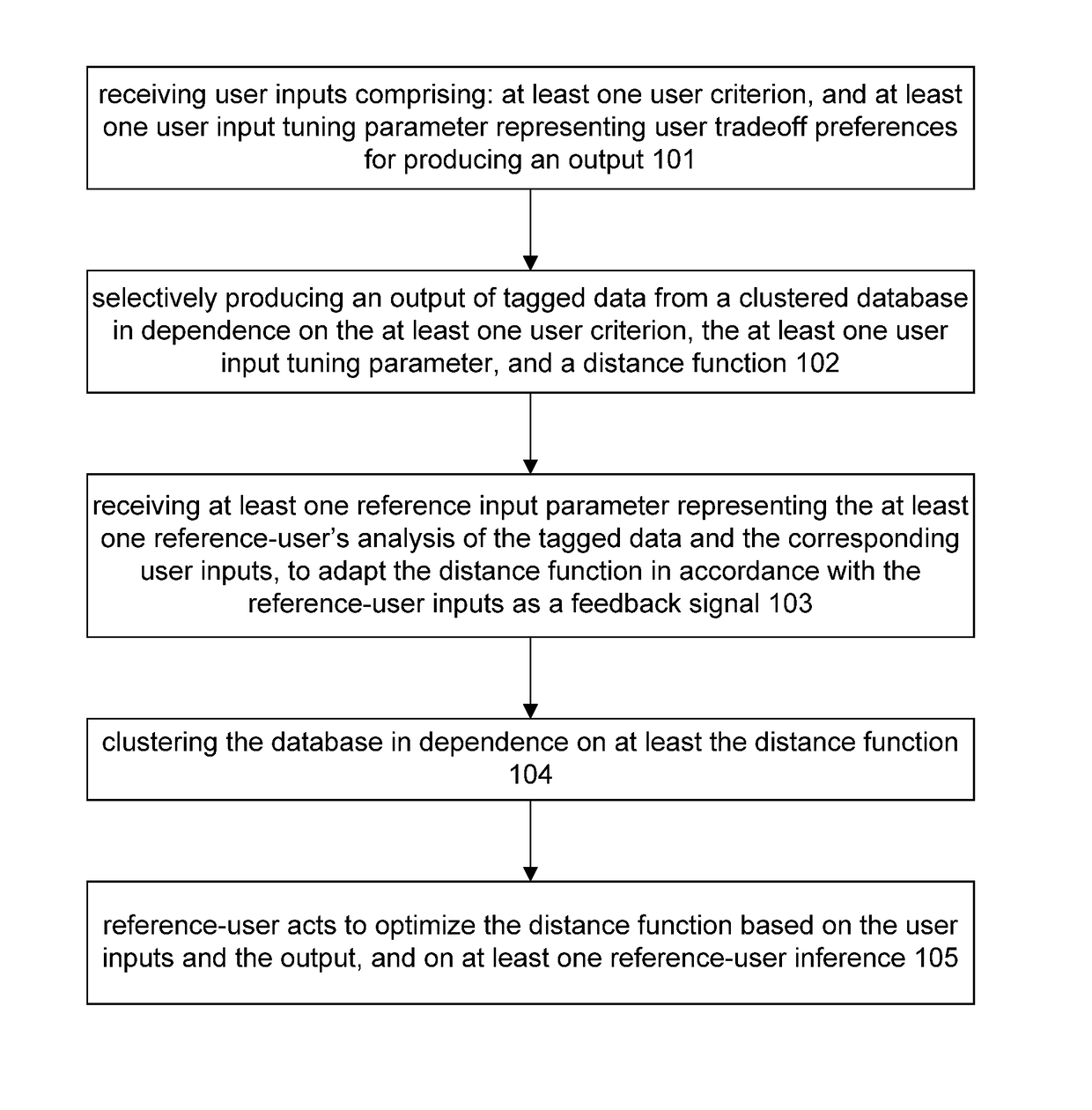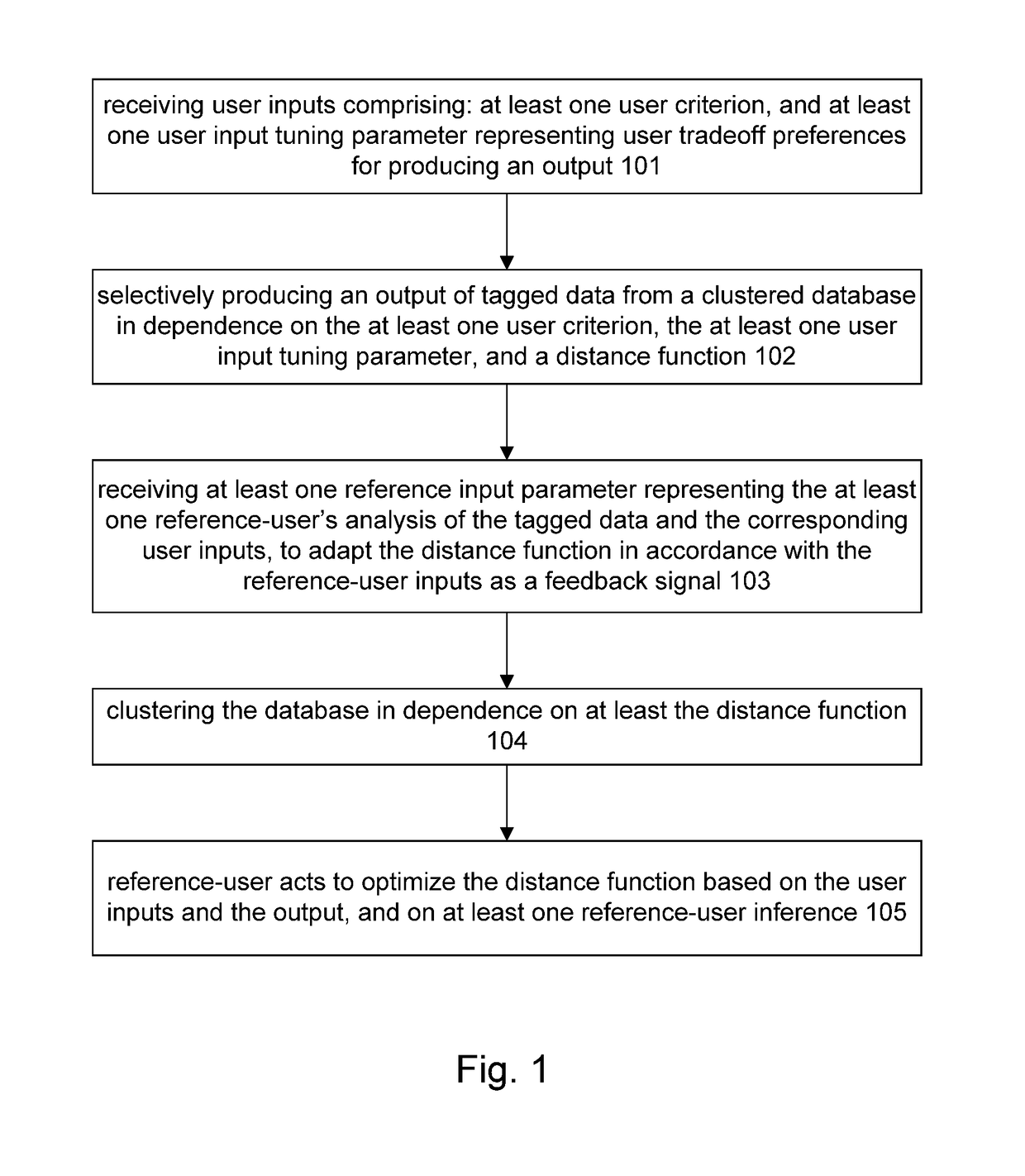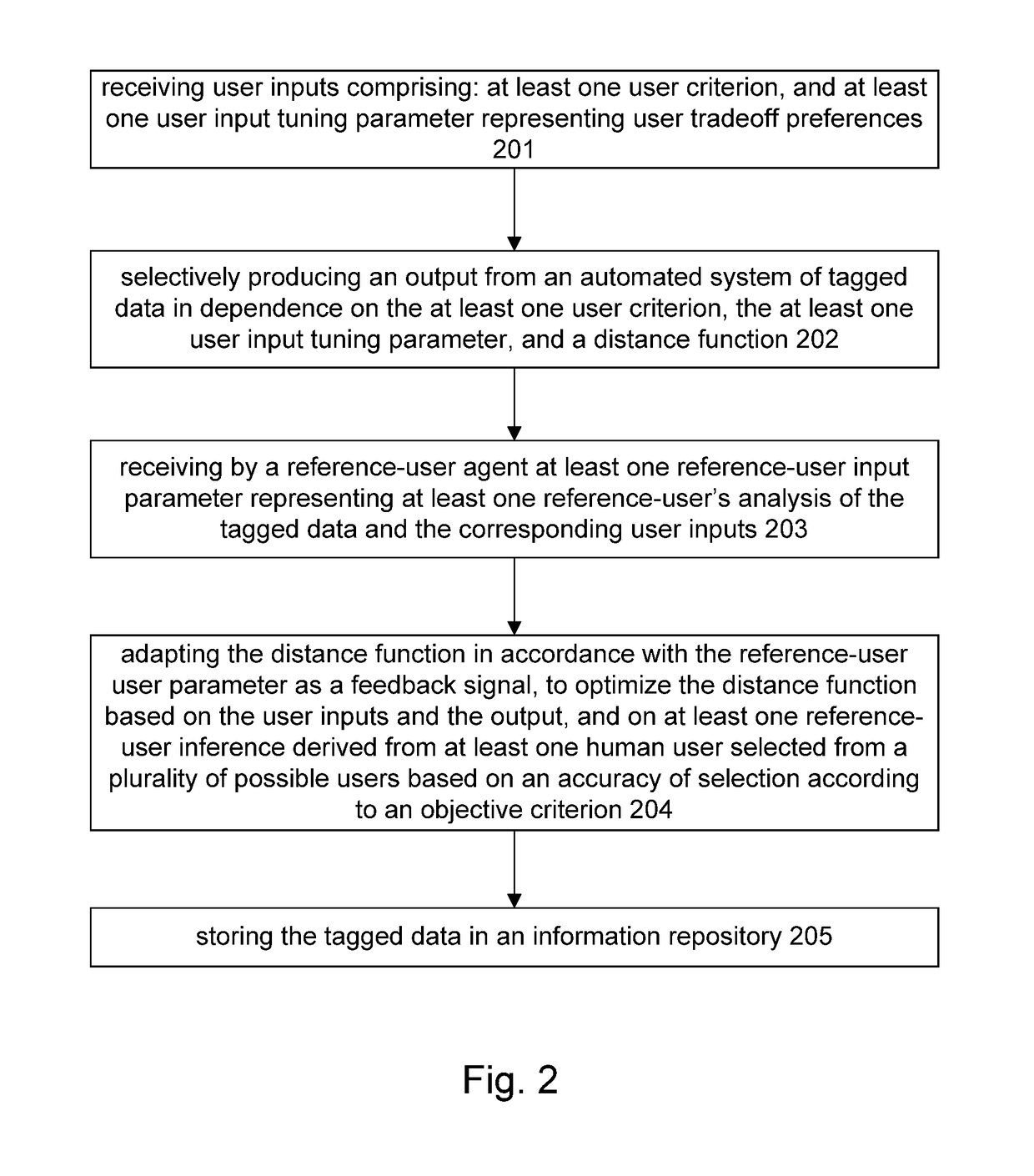Insight and algorithmic clustering for automated synthesis
an algorithmic clustering and automated synthesis technology, applied in relational databases, database models, instruments, etc., can solve problems such as faulty analysis, inability to monitor and communicate decisions, and inefficient finding of true value in available markets
- Summary
- Abstract
- Description
- Claims
- Application Information
AI Technical Summary
Benefits of technology
Problems solved by technology
Method used
Image
Examples
Embodiment Construction
[0369]Search Engine
[0370]The reference-user is exploited in various ways. In a very uncommon scenario, the reference-user directly and in real time guides a search result. That is, the reference-user acts as expert assistance for the user, a sort of reference librarian. The abilities of the reference-user are directly exploited, but this is expensive, non-scalable, and may have difficulty addressing contexts that transcend a single reference-user, such as a hybrid context.
[0371]Another way to exploit a reference-user is to obtain a rich profile of the reference-user based on close monitoring of the reference-user or explicit training by the reference-user of an automated system. In essence, the reference-user's essence is transferred to an artificial agent, which then emulates the reference-user. This technique is both scalable and relatively low cost, but may fail in new circumstances. That is, such systems may do a fair job at interpolation, but may have great difficulty extrapola...
PUM
 Login to View More
Login to View More Abstract
Description
Claims
Application Information
 Login to View More
Login to View More - R&D
- Intellectual Property
- Life Sciences
- Materials
- Tech Scout
- Unparalleled Data Quality
- Higher Quality Content
- 60% Fewer Hallucinations
Browse by: Latest US Patents, China's latest patents, Technical Efficacy Thesaurus, Application Domain, Technology Topic, Popular Technical Reports.
© 2025 PatSnap. All rights reserved.Legal|Privacy policy|Modern Slavery Act Transparency Statement|Sitemap|About US| Contact US: help@patsnap.com



